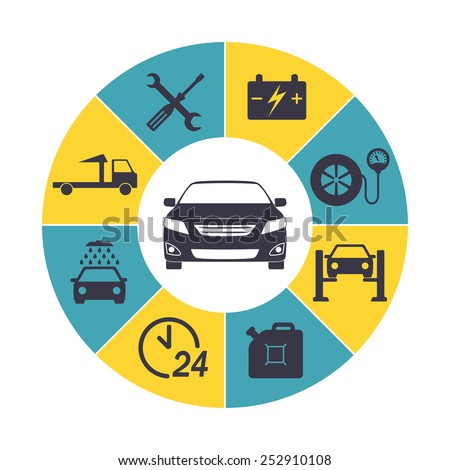Intrigued In Recognizing The Caution Lights On Your Automobile'S Control Panel? Discover Their Relevance For Your Car'S Security And Overall Condition
Intrigued In Recognizing The Caution Lights On Your Automobile'S Control Panel? Discover Their Relevance For Your Car'S Security And Overall Condition
Blog Article
Short Article Composed By-Samuelsen Dalgaard
When you lag the wheel, those radiant caution lights on your dashboard can be a bit difficult. Do you recognize what they're attempting to tell you regarding your vehicle's wellness? Understanding the value of these lights is vital for your security and the durability of your lorry. So, the following time one of those lights pops up, would not you intend to understand its message properly and take the required actions to resolve it?
Common Warning Lights and Interpretations
Identify common warning lights in your vehicle and understand their significances to guarantee secure driving.
One of the most normal warning lights include the check engine light, which indicates concerns with the engine or exhausts system. If this light comes on, it's important to have your vehicle checked promptly.
The oil stress cautioning light shows reduced oil stress, calling for prompt focus to avoid engine damage.
A flashing battery light could suggest a faulty billing system, potentially leaving you stranded otherwise attended to.
The tire pressure tracking system (TPMS) light informs you to low tire stress, affecting lorry security and gas effectiveness. Disregarding this could bring about dangerous driving conditions.
The abdominal muscle light shows an issue with the anti-lock stopping system, endangering your capability to quit quickly in emergencies.
Finally, the coolant temperature level warning light warns of engine overheating, which can cause severe damage if not fixed swiftly.
Understanding these usual warning lights will certainly assist you resolve problems immediately and keep risk-free driving conditions.
Significance of Prompt Interest
Recognizing the typical caution lights in your automobile is just the first step; the importance of quickly addressing these warnings can't be stressed enough to guarantee your safety and security when driving.
When a caution light illuminates on your dashboard, it's your automobile's way of interacting a potential issue that requires attention. Overlooking these cautions can bring about much more extreme troubles later on, compromising your safety and security and potentially costing you more in repairs.
Prompt attention to cautioning lights can prevent failures and accidents. For example, a blinking check engine light might suggest a misfire that, if left unattended, could trigger damage to the catalytic converter. Resolving https://www.moneytalksnews.com/this-grocery-store-frozen-pizza-left-reviewers-speechless/ without delay can save you from a costly repair.
Likewise, a brake system advising light might signal low brake liquid or worn brake pads, critical elements for your safety and security when driving.
DIY Troubleshooting Tips
If you discover a caution light on your control panel, there are a few DIY troubleshooting ideas you can attempt prior to seeking expert assistance.
The first step is to consult your cars and truck's manual to understand what the specific caution light indicates. In some cases the concern can be as simple as a loosened gas cap setting off the check engine light. Tightening up https://brake-check28495.newbigblog.com/36261125/the-relationship-between-car-outlining-and-resale-value-what-research-reveals may deal with the trouble.
One more common problem is a low battery, which can trigger various alerting lights. Checking the battery links for rust and ensuring they're safe may take care of the trouble.
If a caution light continues, you can attempt resetting it by separating the cars and truck's battery for a couple of mins and then reconnecting it. Additionally, examining your car's fluid levels, such as oil, coolant, and brake fluid, can aid troubleshoot cautioning lights associated with these systems.
Conclusion
In conclusion, comprehending your vehicle's warning lights is essential for keeping your car running efficiently and safely. By quickly attending to these signals and recognizing what they suggest, you can stay clear of pricey repair work and potential failures.
Remember to consult your automobile's manual for particular details on each cautioning light and act appropriately to make certain a hassle-free driving experience.
Stay notified, remain safe when driving!
